Netherton Tunnel
The Netherton Tunnel is the longest canal tunnel in the West Midlands that is still open. It has double towpaths and connects the Birmingham Main Line and Dudley Canals via a dedicated branch. It was the last canal tunnel to be built in the UK and was constructed by a railway contractor. The tunnel offers you a chance to venture through a marvellous piece of Victorian engineering.
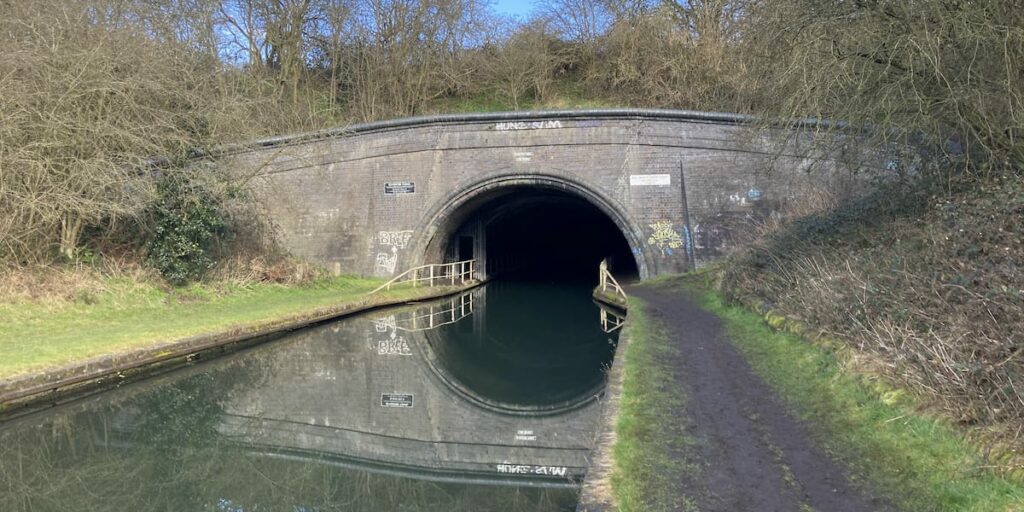
Key info
| North portal location | Tividale, Tipton, B69 2HU |
| South portal location | Netherton, Dudley, DY2 8ET |
| County | West Midlands |
| Completed | 1858 |
| Engineer | Messrs Walker, Burges & Cooper |
| Resident Engineer | James Ralph Walker |
| Maintained by | Canal & River Trust |
| Heritage category | Listed Building Grade II |
Visiting guide
Open 24 / 7
Free entry
Free car park / street parking
What can I expect when visiting Netherton Tunnel?
The tunnel is no longer lit except for the odd light coming down from the ventilation shafts, the structure is mostly pitch black. You can visit the southern and northern portals separately or venture into the tunnel. If you decide to journey through the tunnel, take note of the following.
Can you walk through Netherton Tunnel?
Yes, you can and will require a decent flashlight. There are railings alongside each towpath to stop you from falling into the canal; however, you will need to tread carefully; therefore, this journey most certainly requires sturdy footwear. We recommend that you do not walk the tunnel alone.
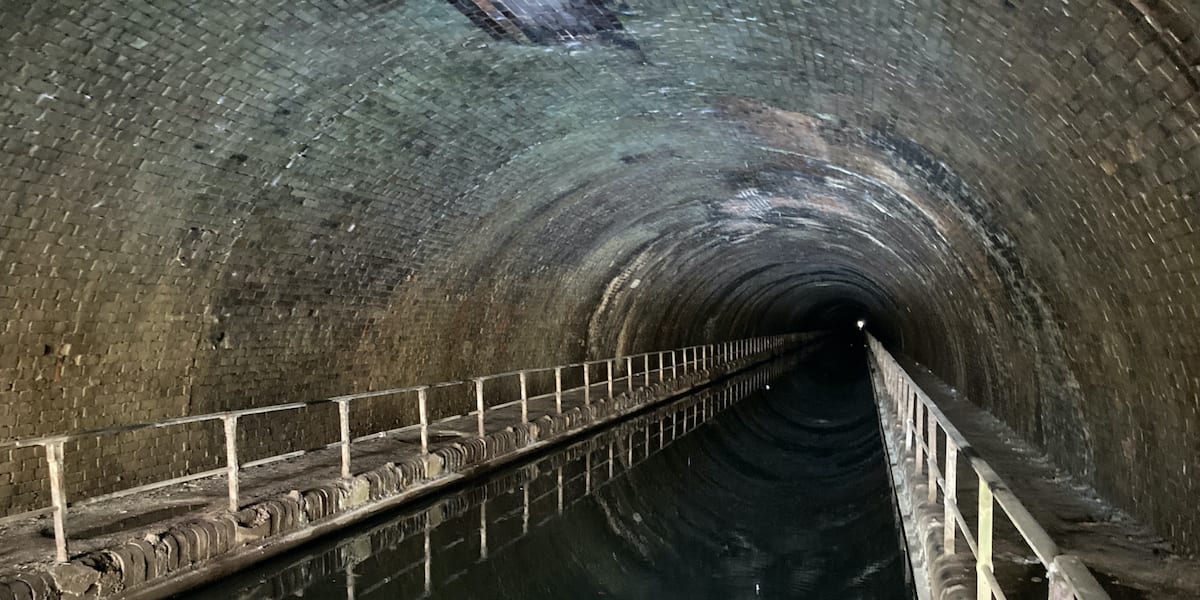
Can you cycle through Netherton Tunnel?
Yes, however, it’s wet and the roof arch is low. It’s highly recommended you attach a powerful flashlight to the front of your bicycle and helmet and ride at a low speed. Be wary of the uneven towpath surface.
Visiting the southern portal
The southern portal is located next to Cobb’s Engine House, which is in the middle of the Bumble Hole and Warrens Hall Local Nature Reserves. This green and pleasant area offer stunning views of the Black Country and the Clent Hills.
Looking at the southern tunnel portal, you will notice patched up cracks. These scars are a reminder of the pestilence that is subsidence, which was a continual problem in areas that experienced heavy coal mining.
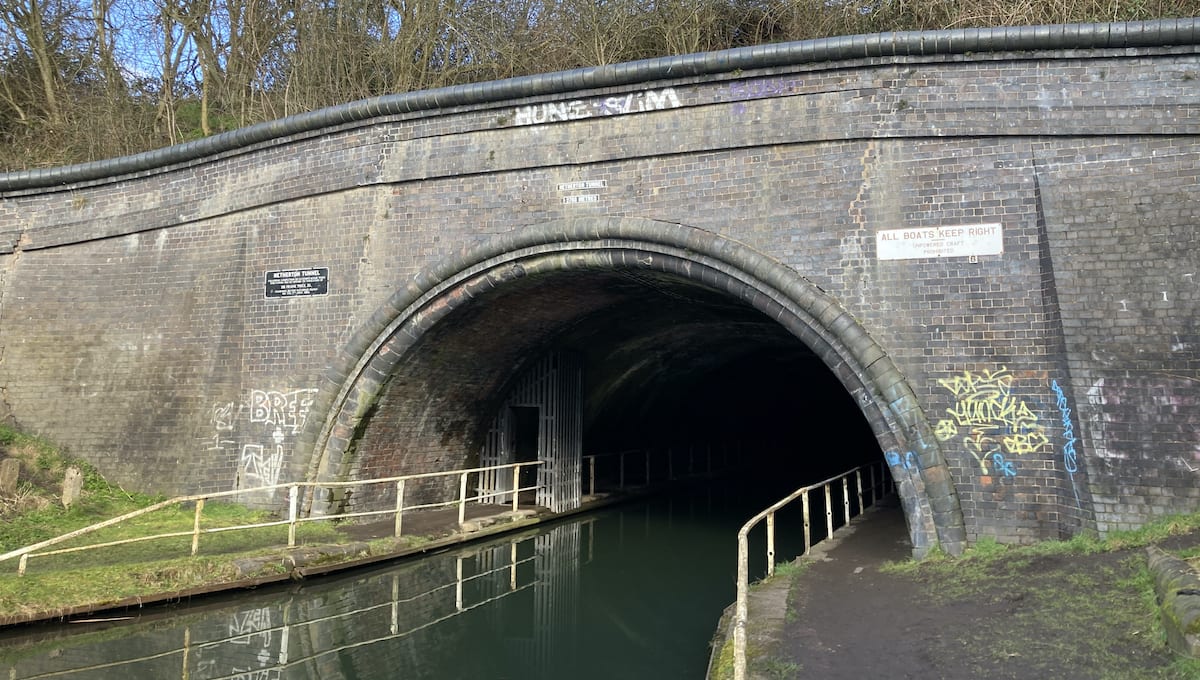
Visiting the northern portal
The northern tunnel portal is situated in a developed area. There’s not much to see except the Tividale Aqueduct, some remaining canal cottages and the remains of a toll island. You’ll see two pipes leading down into a shack on the south-west face of the aqueduct. This is the remains of a hydroelectric turbine that used water from the canal above to generate electricity for lighting the tunnel [1].
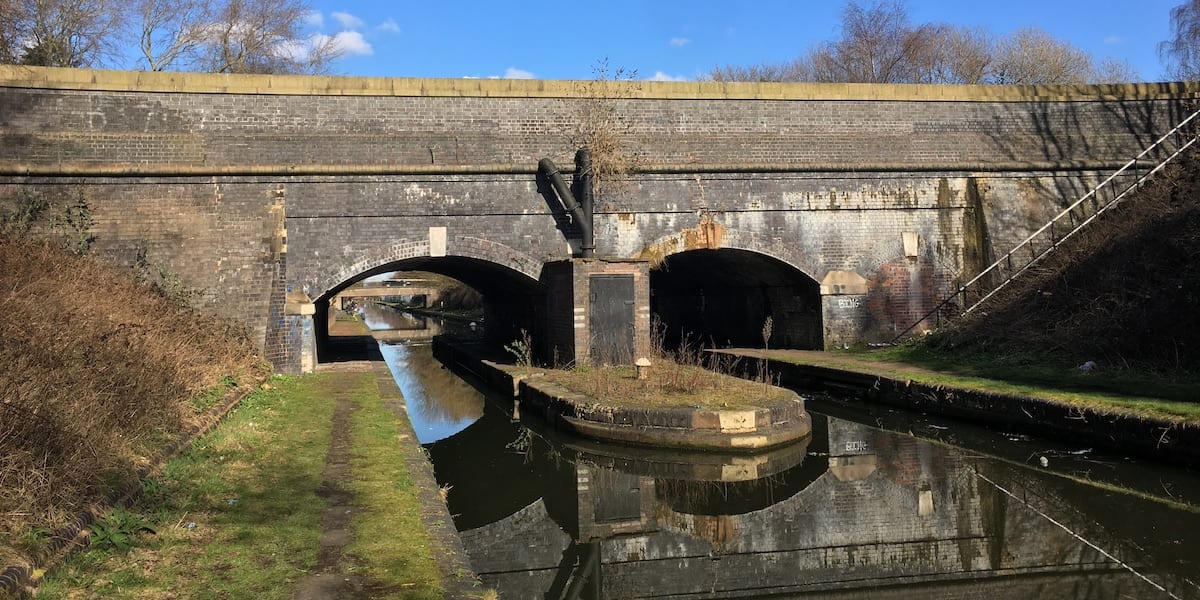
How long does it take to see Netherton Tunnel?
The Netherton Tunnel will take around 40 mins to walk through and probably not much less via bike because you will have to cycle at a low speed.
The southern portal will take around 20 minutes to see; however, your visit can be extended by exploring Cobb’s Engine House and the nature reserves.
The northern portal and Tividale Aqueduct will also take around 20 minutes to see, you may wish to continue walking along the Birmingham canals.
Overall, a journey through the tunnel, visiting each portal and returning to the start can be achieved in about 1 hour and 40 minutes.
Is the Netherton Tunnel suitable for a picnic?
The southern portal is located in the Bumble Hole and Warrens Hall Local Nature Reserves, which has plenty of spots for a picnic. The northern portal is not suitable for picnicking.
How do I get to Netherton Tunnel?
For the south tunnel portal, use the Windmill End Car Park, which can be accessed from Vale Road. It’s free and is located right next to the canal leading to the tunnel. There are bus stops on St Peter’s Road nearby with services from Dudley.
For the north tunnel portal, park on Kiers Bridge Close. It is a residential cul-de-sac, next to the Birmingham Main Line Canal, which you will walk down to the Tividale Aqueduct before heading down to the Netherton Tunnel branch below. There are bus stops on Dudley Road West (A4033), walk up Groveland Road to access the main line canal and then follow it as detailed above.
History of Netherton Tunnel
1792 – A canal tunnel at Netherton was first proposed as part of the original plans to extend the Dudley Canal. The land surveyor James Sheriff outlined a communication branch to the Birmingham canal at Oldbury via a tunnel. This branch was never constructed because the canal company decided to build up coal trade in order to start paying dividends [2].
1846 – The Dudley Canal Company merges with the Birmingham Canal Navigations (BCN) after years of proposed mergers that failed. A merger is eventually realised as the best course of action due to the growing network of railway lines and their subsequent increase in influence. A key agreement of the amalgamation is the provision of a new canal to connect the Dudley and Birmingham lines [3]. The idea of a tunnel re-emerges.
1853 – Improvements are made to the BCN network that involves building new canal extensions, which become successful. Various ideas are submitted to increase the capacity of the Dudley Tunnel, which are rejected [4]. This inevitably led to the proposal of the Netherton Tunnel Branch Canal to deliver on the agreement of providing a new connection between the Dudley and Birmingham lines and relieve congestion at the Dudley Tunnel.
1855 – Construction of the Netherton Tunnel branch was authorised. On 31st of December, the first sod was turned by William Ward, 1st Earl of Dudley in the presence of 300 or so consisting of gentry and ironmasters. The contract is let to George Meakin of Birkenhead, here we have a railway contractor building a canal tunnel [8].
1858 – Netherton Tunnel opens on 20th August. It was constructed using 27 million bricks and 53,000 cubic yards of puddling clay after half a million tonnes of rock was removed. The tunnel was unique at the time for having double towpaths and gas lighting. The final cost was about £302,000 (£38.3 million in 2020), more than the original estimate of £238,000. The extra cost is attributed to increasing the invert and strength of the retaining walls at either end due to the unstable land that the tunnel passed through [2].
1915 – The tunnel lighting is changed from gas to electric [4].
1984 – Tunnel repairs are completed, which included inserting extensive concrete sections to the canal bed. The tunnel is reopened on 17th April by Sir Frank Price, chairman of the British Waterways Board [1].
1987 – The north and south tunnel portals are listed as Grade II structures [5][6].
2013 – Work is carried out by the Canal & River Trust to repair damage caused by a section of the tunnel moving. £1.5 million was spent pinning the tunnel back into the rockface with giant steel pins. A concrete cover was constructed between 1465 and 1510 metres of the tunnel on top of the original brickwork to seal the anchors in place [7].
Architecture and dimensions
The north and south tunnel portals are brick round arches with moulded arch bands and sandstone keystones. The flanking walls are battered and of a concave plan. The parapets have brick coping [5][6].
How long is Netherton Tunnel?
The Netherton Tunnel is 2768 m (3027 yd) or 1.72 miles. It is the longest canal tunnel in the West Midlands that is still in use. The tunnel has a water width of 17 ft (5.2 m) and a height of 22.75 ft (7 m) [1]. It is also wider than any other canal tunnel built in Britain.
How was the tunnel constructed?
Seventeen shafts were sunk along the route of the tunnel over the Rowley Hills. Workers dug down to the level of the tunnel and then created a series of cuttings interlinking each shaft, which is where spoil would be lifted out.
Of the seventeen shafts, eight were left to provide ventilation to the tunnel, the others were filled in upon completion of the project. The greatest depth of the shafts is 344 ft (105 m) and the least depth is 65 ft (20 m). The remaining shafts are lined with bricks and supported on top of the tunnel arch by a cast iron curb, weighing 9 tonnes in four pieces, strongly bolted together [8]. You can see the curbs as you walk through the tunnel where light enters from the shafts above.
The shaft towers above ground are affectionately referred to by the locales as ‘pepper pots’ and you can visit seven of them via the Netherton Pepper Pot Trail.
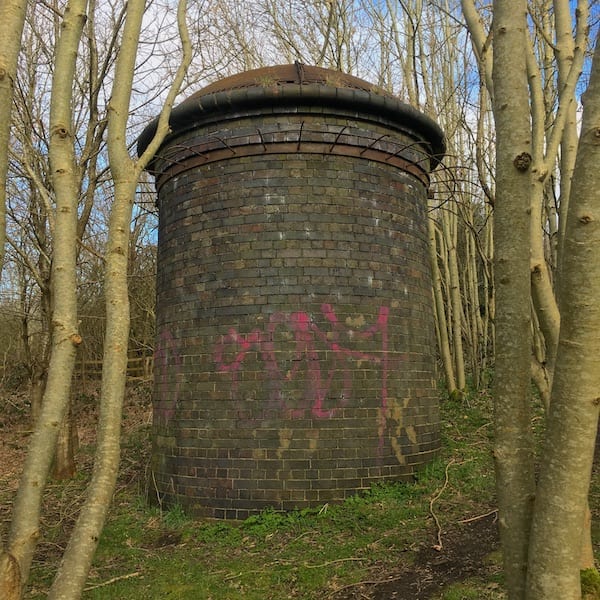
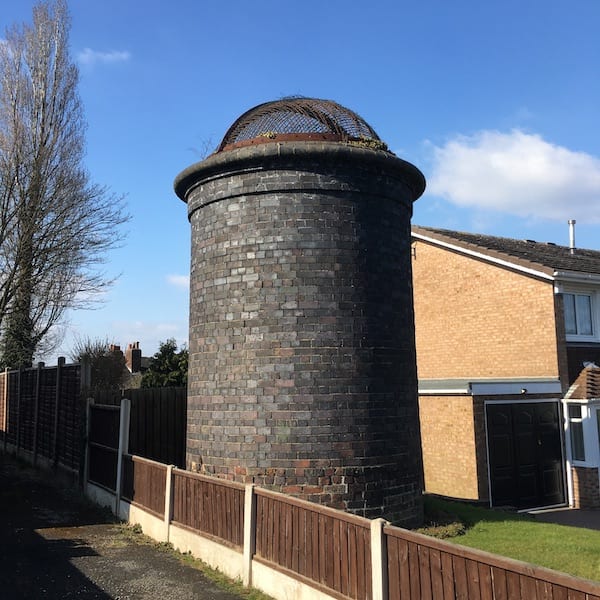
Sources
- Collins, P. (2011) Black Country Canals. Stroud: The History Press.
- Hadfield, C. (1985) The Canals of the West Midlands. Newton Abbot: David & Charles (Publishers) Limited.
- Broadbridge, S. R. (1974) The Birmingham Canal Navigations Volume I 1768-1846. Newton Abbot: David & Charles (Holdings) Limited.
- Dudley Canal Trust (2021) History of the Tunnels. Available at: https://www.dudleycanaltrust.org.uk/history-of-the-tunnels (Accessed: 14 March 2021).
- Historic England (2021) South Portal, Netherton Tunnel, Warrens Hill Park Birmingham Canal Netherton Tunnel Branch Windmill End, Rowley Kings. Available at: https://historicengland.org.uk/listing/the-list/list-entry/1342648 (Accessed: 14 March 2021).
- Historic England (2021) North Portal, Netherton Tunnel (Approximately 130 Metres North East of Dudley Road West) Birmingham Canal Netherton Tunnel Branch, Tividale. Available at: https://historicengland.org.uk/listing/the-list/list-entry/1215046 (Accessed: 14 March 2021).
- Canal & River Trust (2013) Netherton Tunnel repairs by Canal & River Trust. Available at: https://www.youtube.com/watch?v=28LHpvvkFrk (Accessed: 14 March 2021).
- Walker, J. R. (1860) ‘Description of the Works on the Netherton Tunnel Branch of the Birmingham Canal’, Minutes of the Proceedings of the Institution of Civil Engineers, 19(1860), pp. 263-276.

 Longdon-on-Tern Aqueduct
Longdon-on-Tern Aqueduct